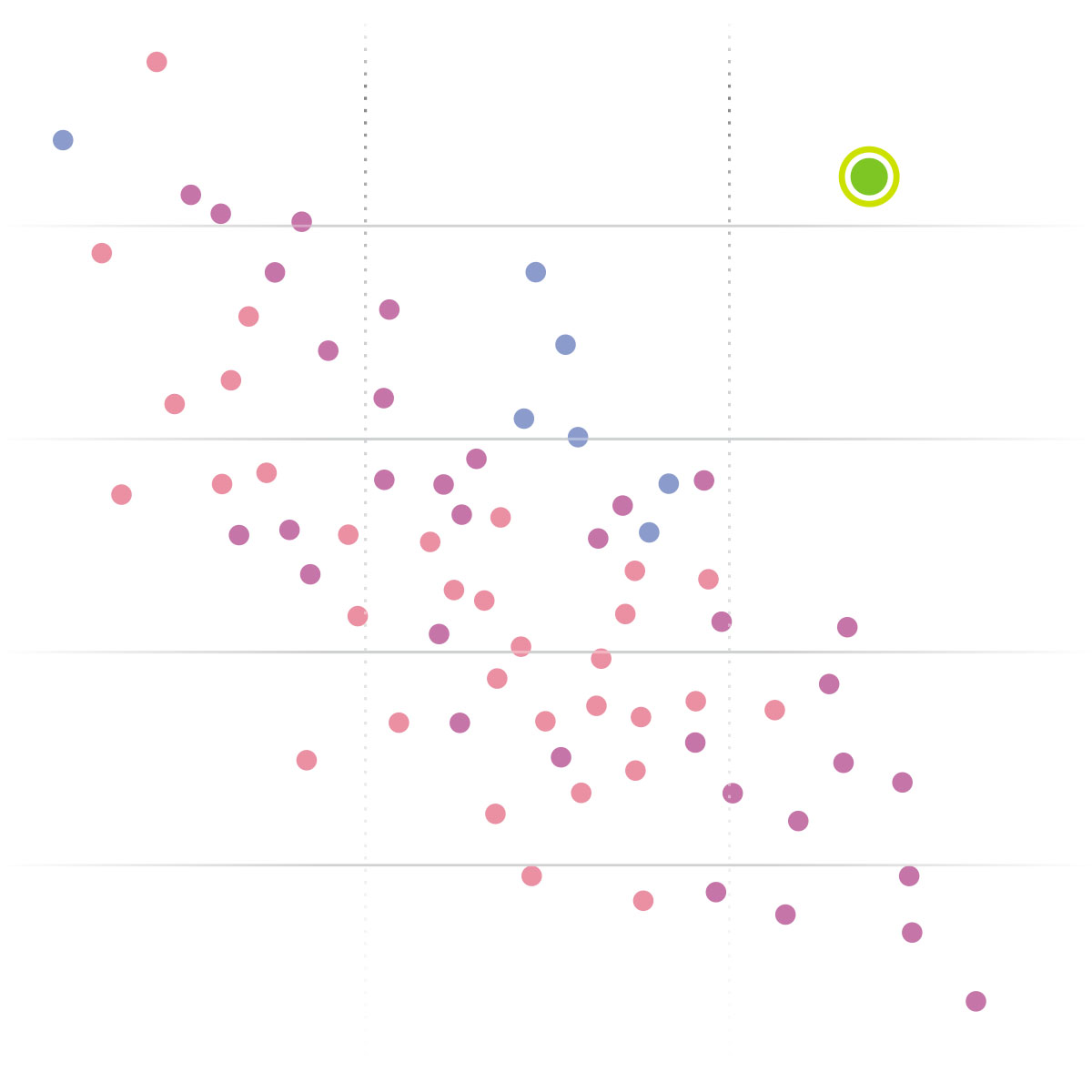Right now there is much to celebrate in the world of progressive organisations…
Haier, the world’s largest networked organisation (at 75,000 people) is enjoying both unrivalled growth in their sector and great notoriety given its story of organisational innovation. Spotify has had to do a lot of things right to become a $46Bn dollar business and the most used music streaming service on the planet, a sector which is riddled with the corpses of other services that couldn’t make it. One of the earliest progressives, Gore, (of Gore-Tex fame) was founded in 1958. From the beginnings it has sought to relentlessly innovate its approach to management and how it organises itself, with the belief that that product and market innovation will follow. With a product portfolio including everything from guitar strings to synthetic medical implants to outdoor apparel, they have proved their point.
What mostly gets written about these organisations are their strikingly radical organisational designs. Haier a “an ecosystem of entrepreneurial micro businesses”, Spotify also championing team autonomy but with a different approach where “squads, tribes and guilds” are the order of the day. Gore have always aggressively minimised bureaucracy, a big part of which is to have a very different approach to hierarchy, one where it is the teams who decide who they want to be led by.
If, as a leader, you would like to emulate these organisations and the innovation, growth and employee experience they enjoy you may well be wary of a step into the unknown by pursuing a new, radical organisational design. And well you should.
We have been researching and working with organisations who have the innate ability to innovate, change and retain the best talent, and those that cannot, for decades.
Our research found that the single strongest determinant of success in these three areas was not structure, size, sector, or age of the firm; it was management practices. This has been borne-out by Gallup’s recent research which indicated that management practice was the biggest single determinant of employee engagement at around 70%.
Therefore, our strong advice would be not to restructure as a first step. The biggest gains can be made by comparatively small (not necessarily easy; old habits are hard to break) changes in how we “show-up” as leaders; what we do, how we do and the decisions we make. But where to start? Who has influence, what things should we change, what changes to make and how to make them?
This is where The Vitality Index© comes in; it is able to zero-in on the management processes, practices and behaviours, that, if changed will have greatest benefit in engendering not only high levels of engagement, but also enable an innovative, change enabled culture to emerge. These are specific to each organisations context at a precise moment in time and can be filtered by any attribute; region / business unit / function / team etc.
The Vitality Index© diagnostic is different to polling your people by way of the “employee engagement survey” in a number of different ways:
- Such surveys tend to ask direct, judgemental questions. Whilst, on the surface this may seem to be appropriate, these types of questions invite a significant amount of bias, both conscious and unconscious, and this data contamination severely affects the validity of the output. Improvement actions informed by unreliable data are unlikely to bring the desired impact.
- Engagement surveys usually don’t have a diagnostic capability; they aggregate 1000’s of responses into visually appealing bar charts, depicting the respondent’s judgement of various symptoms that they experience. By contrast, The Vitality Index© diagnostic capability is based on our own empirical research of organisations, through this artificial intelligence is able to pin-point the specific and addressable management practices that reside below the surface level symptoms.
- Indexer offers concise, actionable insights. A typical Investors in People “Insights Assessment Report” runs to around 50 pages of words, numbers, charts and graphics. In our experience, at this weight, most with line management responsibility leave them unread, and even if read, unactioned. In contrast, a line manager on the receiving-end of The Vitality Index© output only receives the information that s/he needs to make improvements, things they can get started with that hour.
- Many of the most commonly used employee engagement surveys guide organisations towards a “gold standard” that is anything but “progressive”, aligned to a style of management more relevant to the world of work in the 1910s. This was a time when repetitive manual labour was the norm, this is not the management we need if we wish to create an environment where highly intelligent and skilled knowledge workers can bring their very best creativity and intellect to the fore. Enlightened leaders know this, they are looking for ways to break away from a “parent-to-child” relationship prevailing in the management dyads of their organisation. The Vitality Index©directs organisations towards management practices based on what science tells us, not what we’ve always done. A working environment where everyone, regardless of their role or status shows-up in an adult-to-adult climate, able to speak freely and give of their best.
If, as a leader, you are thinking about pursuing a more progressive approach to the point that you are ready to commit to change yourself, then we hope this article has been useful and we are cheering you on all the way. Beyond that, if you think some guidance in identifying knowing exactly what to do, and how to do it, based on causes (not symptoms) specific to your organisation at this precise moment in time might be of interest, then please get in touch.

